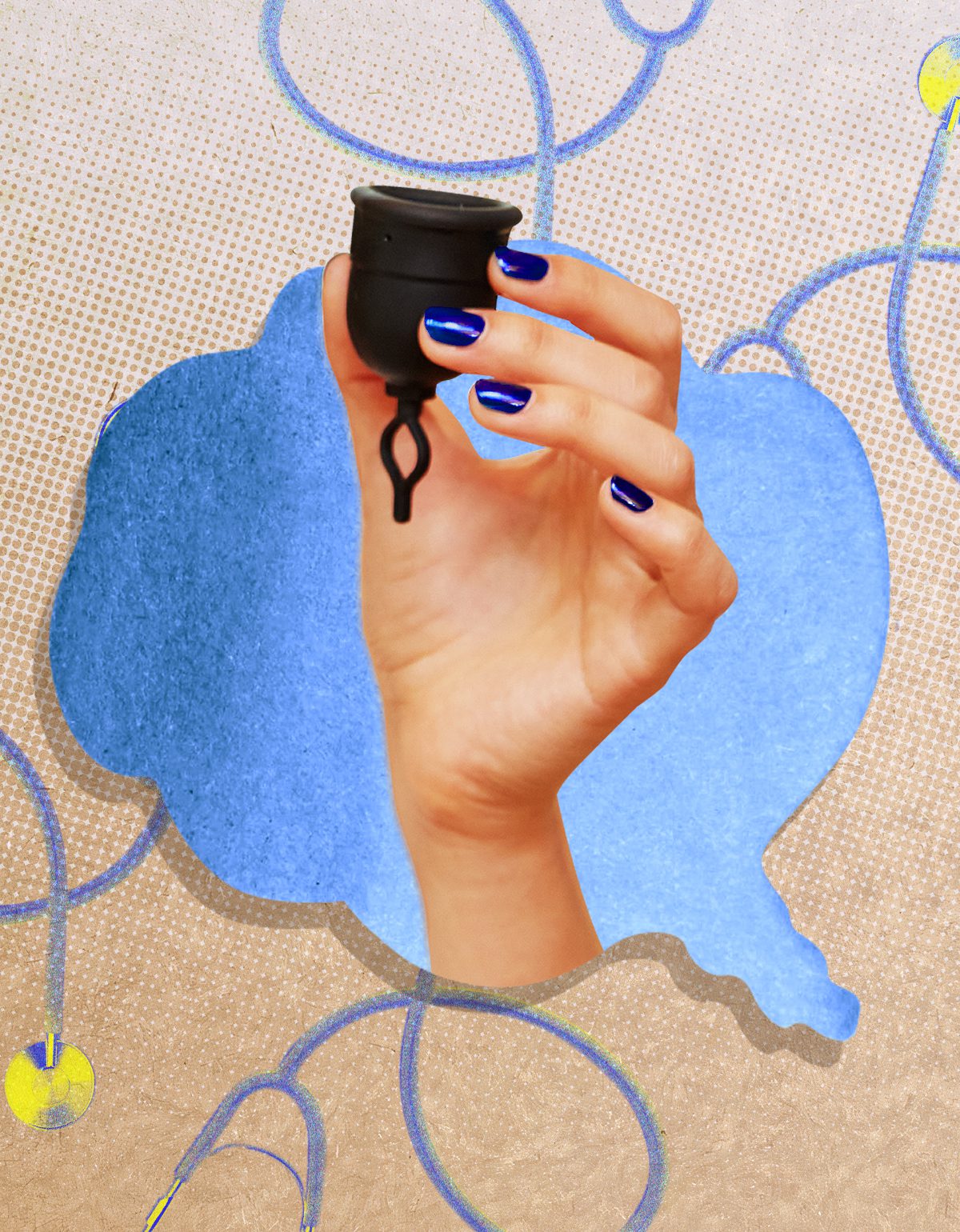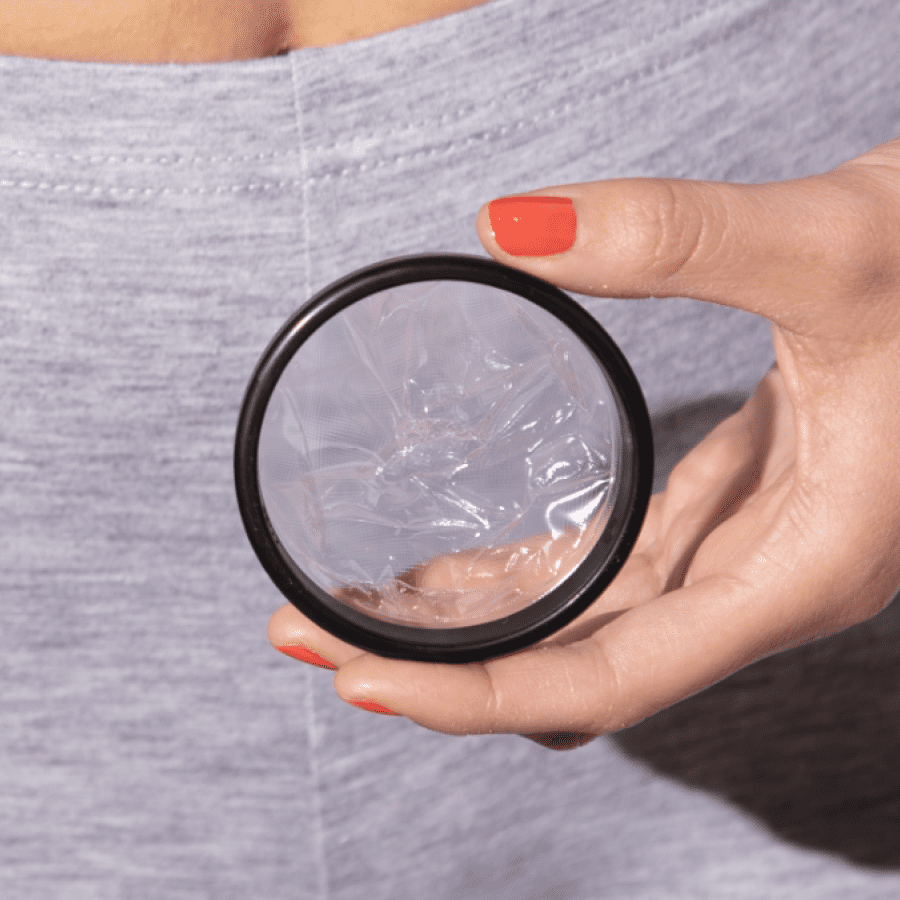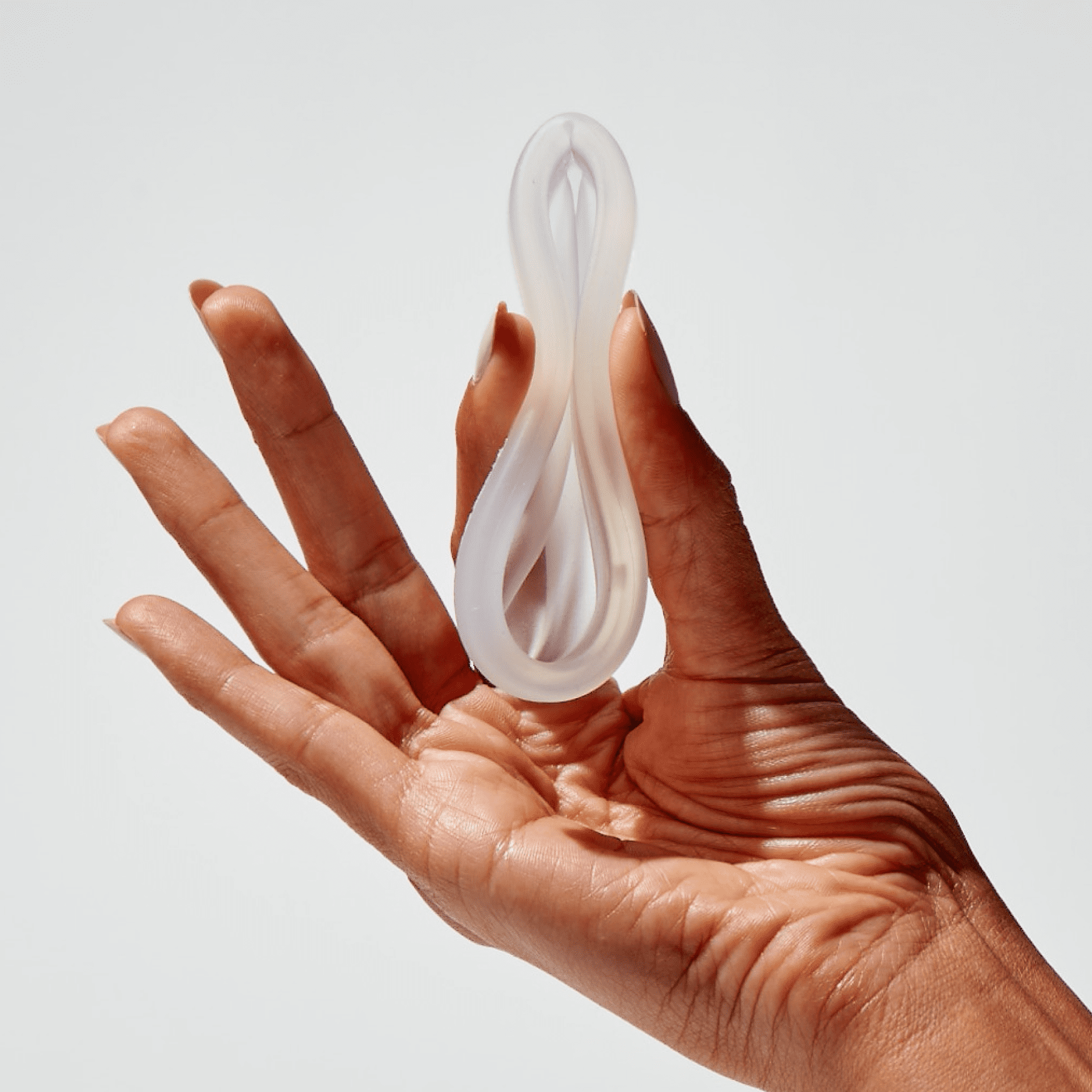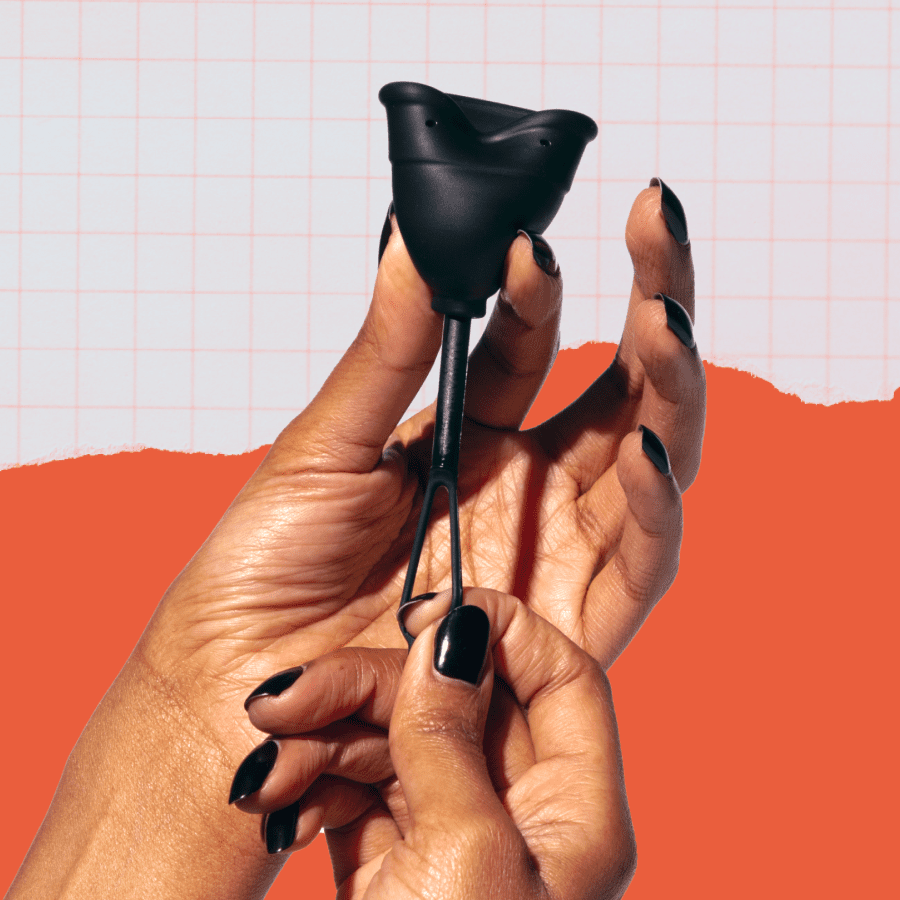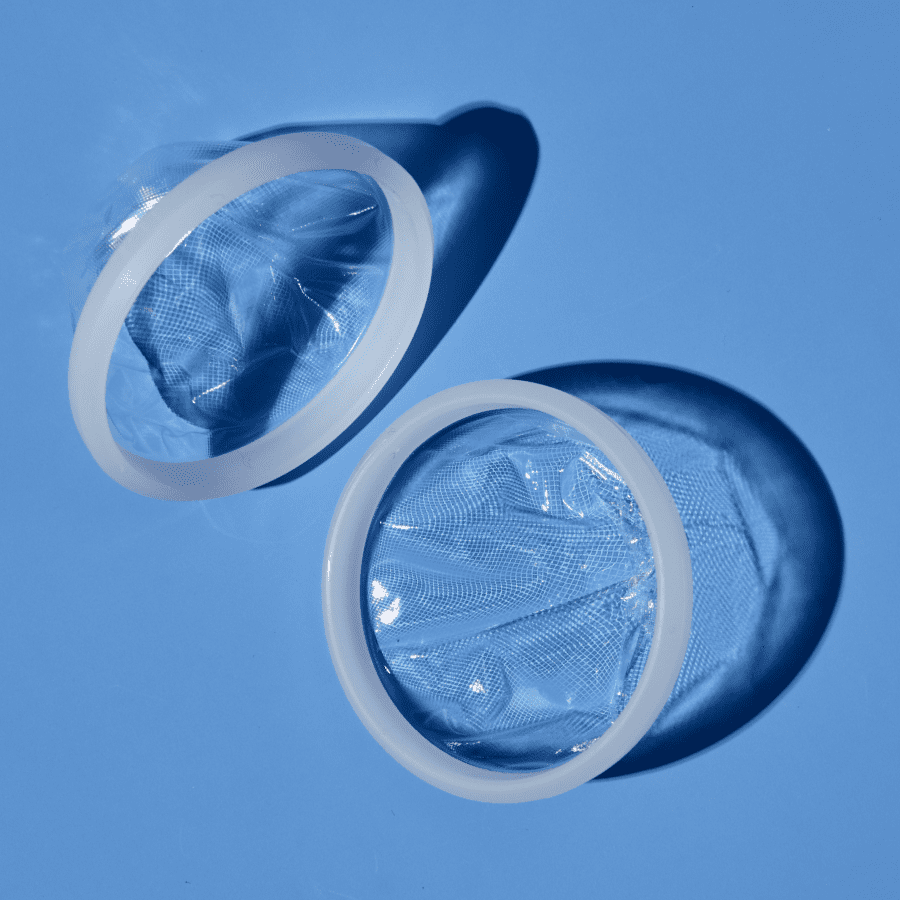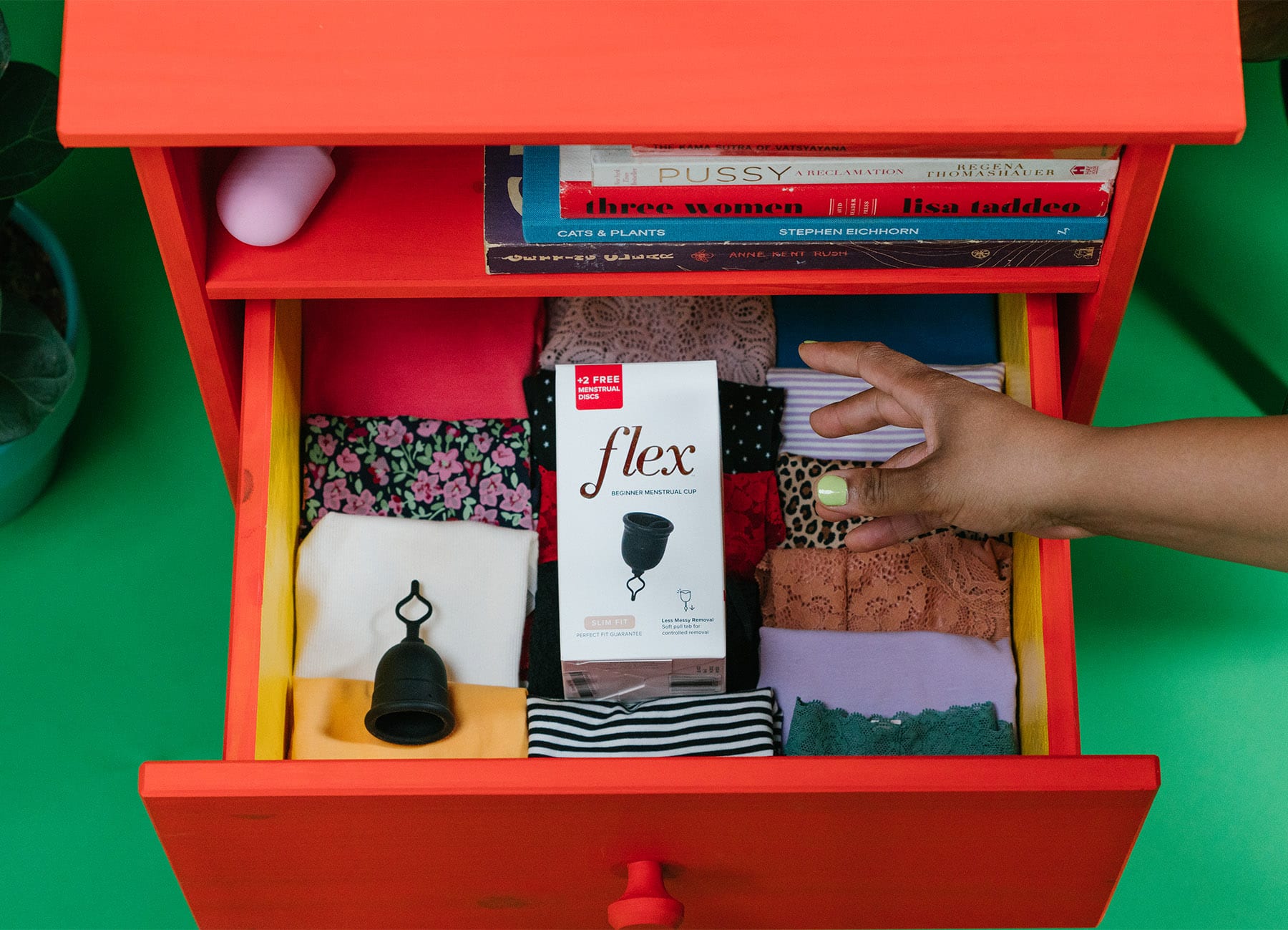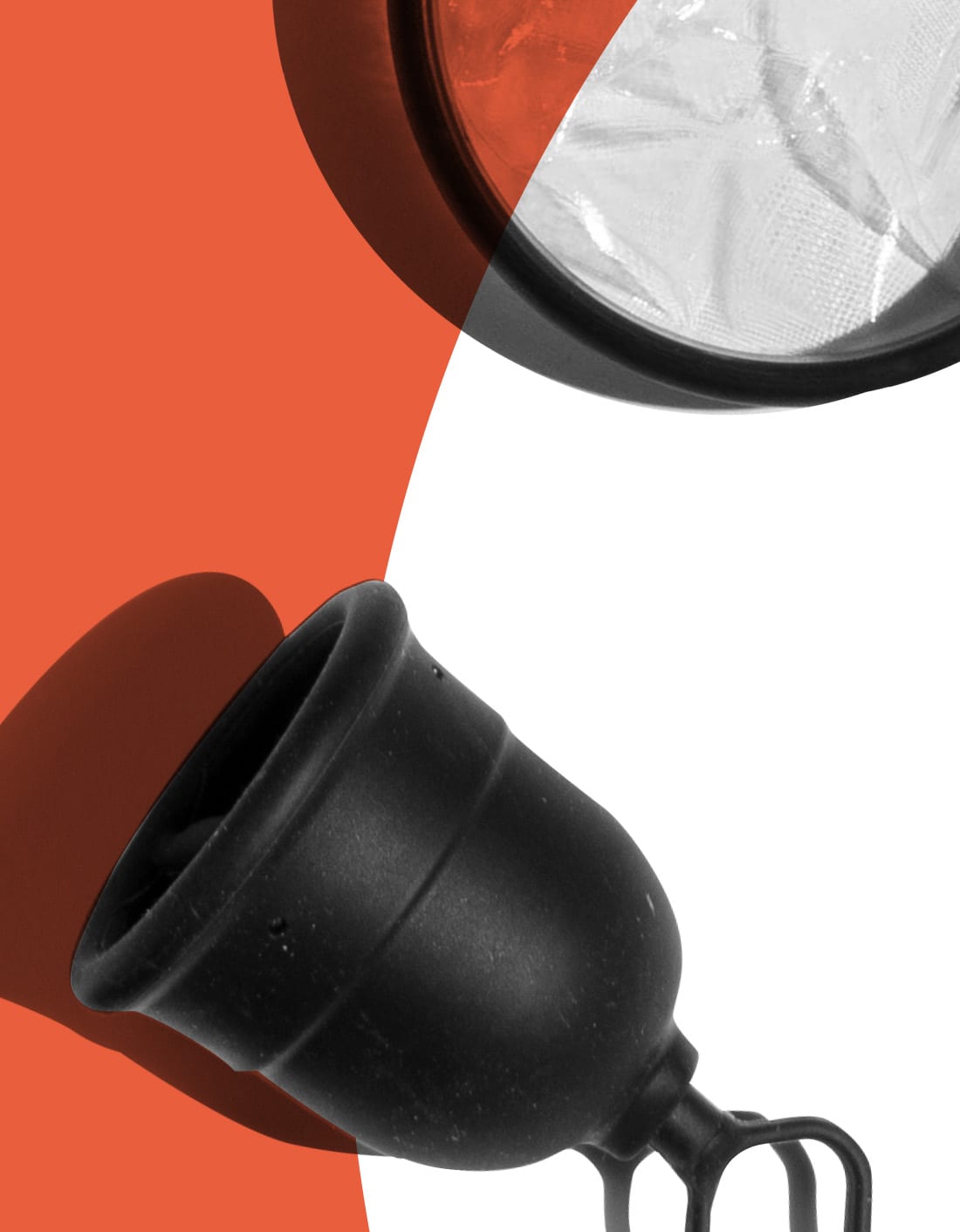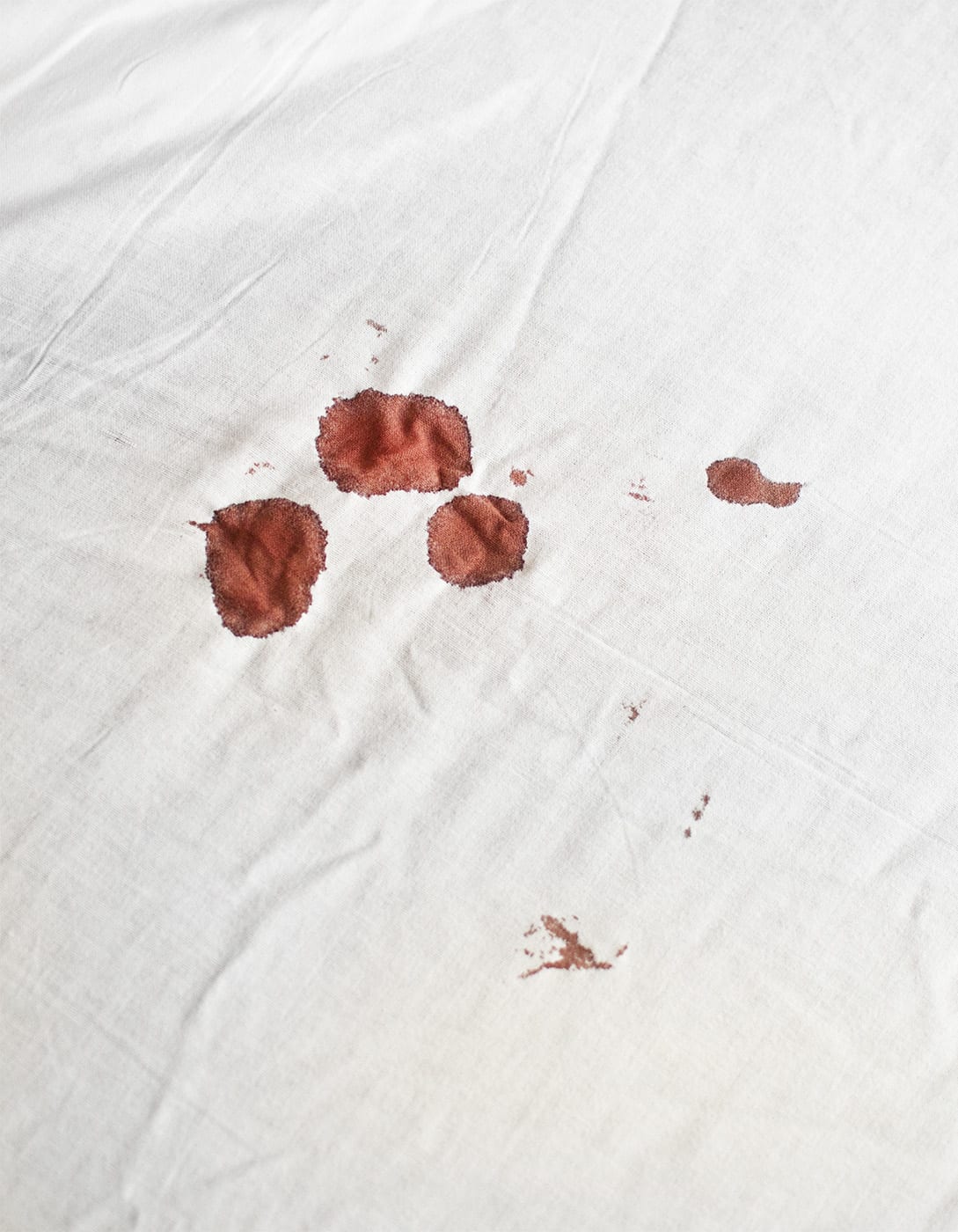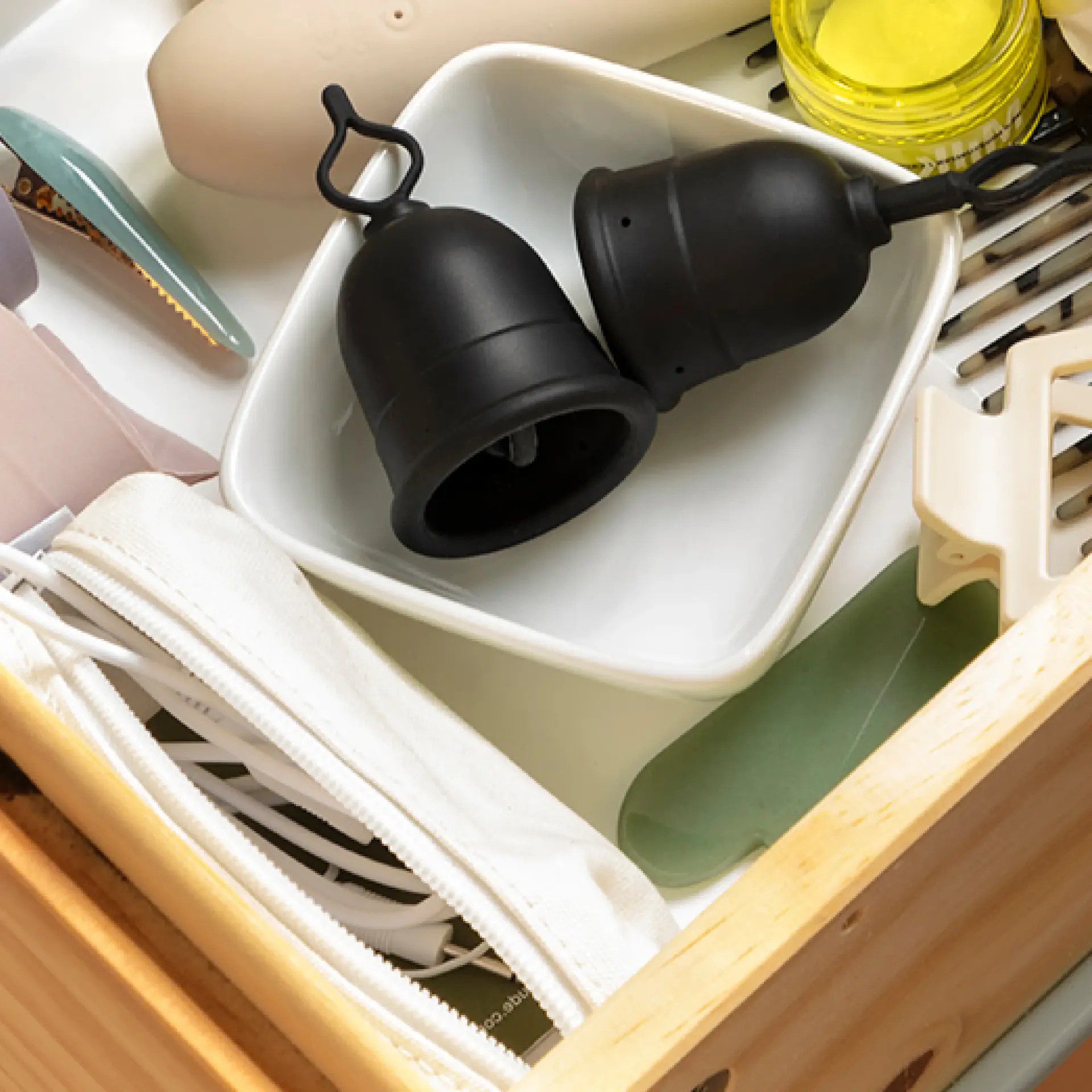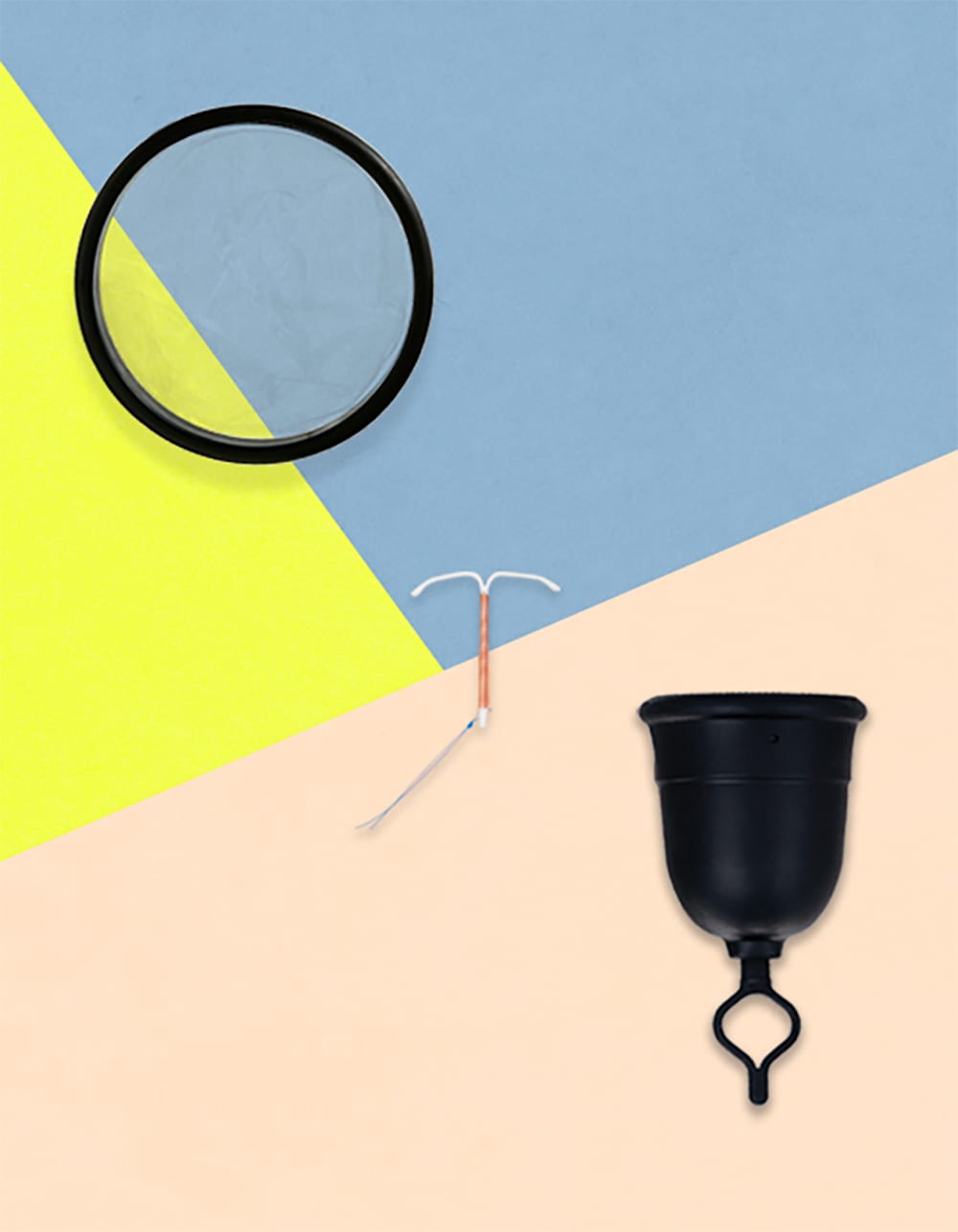A gynecologist’s opinion on menstrual cups
Fun fact: menstrual cups have been around since the 1930s, the same decade that the tampon was invented. However, cups have skyrocketed in popularity over the last few decades thanks to their comfort and ease on the planet.
If you’ve ever wondered about the safety of menstrual cups or what a certified Ob/Gyn thinks about them, we’re diving into the most pressing questions about all things safety, comfort, and use.
We consulted with board-certified gynecologist and Flex® medical advisor Dr. Jane Van Dis for everything you need to know.
Menstrual cup safety: How safe are menstrual cups?
Flex Cup is an FDA-registered medical device. It’s made with 100% medical-grade silicone and without BPAs, phthalates, or natural rubber latex. It may be helpful to know that allergies to medical-grade silicone are uncommon. With a menstrual cup, you bypass the chemicals found in many disposable period products.
Menstrual cups, including Flex Cup, are safe to wear for up to 12 hours. Moisture from pads and tampons can increase susceptibility to yeast infections, so menstrual cups might be a better alternative if you’re prone to yeast infections, as they don’t trap bacteria, are biologically inert, and allow the vulva to breathe.
In a 2019 systematic review and meta-analysis on menstrual cup safety, researchers looked at 43 studies pertaining to menstrual cups. In two studies, they found a decrease in candidiasis, the second most common type of vaginal infection. The review also found that menstrual cups did not affect vaginal flora, which is extremely important in keeping the vagina healthy and reducing risk of infection.1
The same review found a lower prevalence of bacterial infections among menstrual cup users than among users of tampons or pads in two studies.
Dr. Jane says, “Menstrual cups are incredibly safe. When used according to directions, they have not been shown to cause harm to the vagina or the cervix, nor does infection risk increase with the use of a cup, compared to tampons or pads.”
Menstrual cup benefits
There a number of advantages to using a menstrual cup (like Flex Cup). Here are some of our favorites:
1. 12-hour wear
Unlike tampons and pads, you don’t have to change a period cup every couple of hours, making for uninterrupted sleep and better concentration on work and other activities throughout the day. You can swim, dance, work out, or sit on the couch eating your favorite period snack and binge-watching Netflix for up to 12 hours.
2. Higher capacity
Flex Cup collects 2-3X more blood than a super tampon. For reference, Flex Cup Size 02 holds 30 mL of fluid; a regular tampon holds only 5 mL of fluid. The average person bleeds about 30 mL of blood during their entire period. Higher capacity = fewer bathroom trips and fewer worries about leaks.
3. Collects your period, rather than absorbing it
Unlike a tampon, Flex Cup collects your period. Some users tell us that their periods are a day or two shorter when using a cup vs. when using a tampon. This could be because a cup doesn’t slow down the flow of blood from your cervix into your vagina. Plus, the cup works no matter how light or heavy your menstrual flow: You don’t need a unique product for light days vs. heavy flow days.
4. With Flex Cup, removal is as easy as pulling a tampon string
Flex Cup was designed to help solve the “suction” problem that most users deal with when removing a traditional period cup. Most period cups need to be manually removed by squeezing the base of the cup to break the suction seal before pulling it out. With Flex Cup, you can remove your cup by simply by pulling down on the adjustable pull-tab at the bottom of the cup—the same way you’d remove a tampon. The pull-tab threads through a hole at the base of the cup, attaching up at the inner rim of the cup. When pulled, it collapses the cup’s rim inwards, breaking the seal for you. This is an especially helpful feature for period cup beginners and for people with disabilities or dexterity issues.
5. Better for the planet and your wallet
Menstrual cups, like Flex Cup, are 100% reusable and can last for years when properly cared for. This means no more running to the store to buy tampons every menstrual cycle, and way less waste going to landfill.
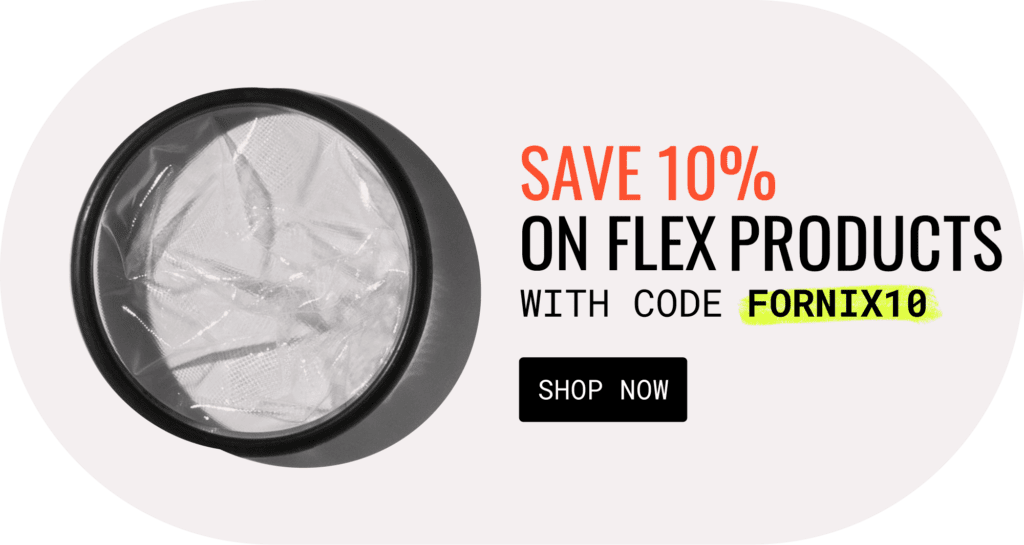
Are there any drawbacks to using a menstrual cup?
Dr. Jane notes that it can be challenging or intimidating for some people to have to clean a period cup between uses when they’re not at home. Some might “feel uncomfortable removing, cleaning, and replacing a cup in a public bathroom,” she explains.
The good news? We created Flex Wipes specifically to alleviate this problem. Instead of walking your reusable cup or disc to the sink to wash it with tap water, you can simply empty its contents in the toilet, use a wipe to clean inside and outside of the cup, flush your wipe down the toilet (they’re biodegradable when flushed), and reinsert as usual.
If you have painful periods, it’s still possible to use a cup. Some people report ease in symptoms with menstrual cups when compared to traditional period products. However, some people with especially severe pain (such as those with endometriosis) may find a menstrual disc, like Flex Disc, to be more comfortable, since a disc sits in a part of the vagina where there are fewer nerve endings and doesn’t block the vaginal canal.
Have difficulty inserting tampons, discs, or cups due to pain? If you’re diagnosed with vulvodynia or another condition that causes chronic vaginal pain, Dr. Jane notes that “This might be an indicator that a non-insertive menstrual product is best for you.” There are plenty of innovative period product options on the market today that don’t require insertion—like reusable sanitary pads and period underwear.
For issues such as prolapse (dropped uterus), pelvic pain, interstitial cystitis, or for people who have recently had vaginal surgery, as a general rule it’s always best to consult with a healthcare professional before using a menstrual cup or disc.
Menstrual Cup + IUD: Are menstrual cups safe with an IUD?
An intrauterine device (a.k.a IUD) is a T-shaped form of contraception that sits inside the uterus. IUD users will have two strings connected to their IUD that hang just past the cervix, inside the vagina. A person should be able to feel IUD’s strings if they insert their finger into the vagina.
Here’s where a valid concern with period cups and IUDs comes into play: If the strings get stuck on something, they may accidentally cause the IUD to be pulled out, AKA unintentional IUD expulsion.
How common is IUD expulsion from menstrual cups? Not very.
The 2012 study published in Contraception debunked the idea that people who use period cups have higher risk of IUD expulsion within 6-8 weeks after insertion.2 There aren’t a ton of studies about IUD displacement and menstrual cups, but there are a few words of wisdom from research we touch on in a piece specifically about IUD safety with menstrual cups.
You can ensure more protection by asking your healthcare provider to trim the IUD strings flush with the cervix. In addition, make sure to always break the seal of your menstrual cup before removal (or use Flex Cup, which breaks the seal for you!).
If you have an IUD as a form of birth control, we recommend checking in with your provider before using any internally-worn period product for the first time, as they know your IUD best.
What about menstrual cups and toxic shock syndrome TSS?
Toxic shock syndrome (TSS) is a rare but life-threatening condition that occurs when toxins, released by the bacteria Staphylococcus aureus and Streptococcus pyogenes, enter the bloodstream.
Menstrual TSS has been reported with tampons, especially when a tampon is left in for too long. While rare, this condition is dangerous and can be life-threatening.
Flex Cup is not linked to TSS. In other words, there isn’t a confirmed case of toxic shock syndrome while wearing Flex Cup to date. Does that mean that period cups don’t pose any risk for TSS? No.
Any internally-worn period product carries some risk for TSS, including period cups.3 The best way to reduce or minimize your risk for TSS is by using your period product as directed in the product’s official instructions for use.
With a menstrual cup, that means wearing your cup for no longer than 12 hours at a time, and being careful to thoroughly clean your cup in between wears.
You should wash your cup with warm water and a mild soap or cleanser every time you remove it, before reinserting. Once a month, it’s a good idea to boil your cup on the stove for 10 minutes to sanitize it before the next time you use it. It’s also incredibly important to wash your hands before and after menstrual cup insertion or removal.
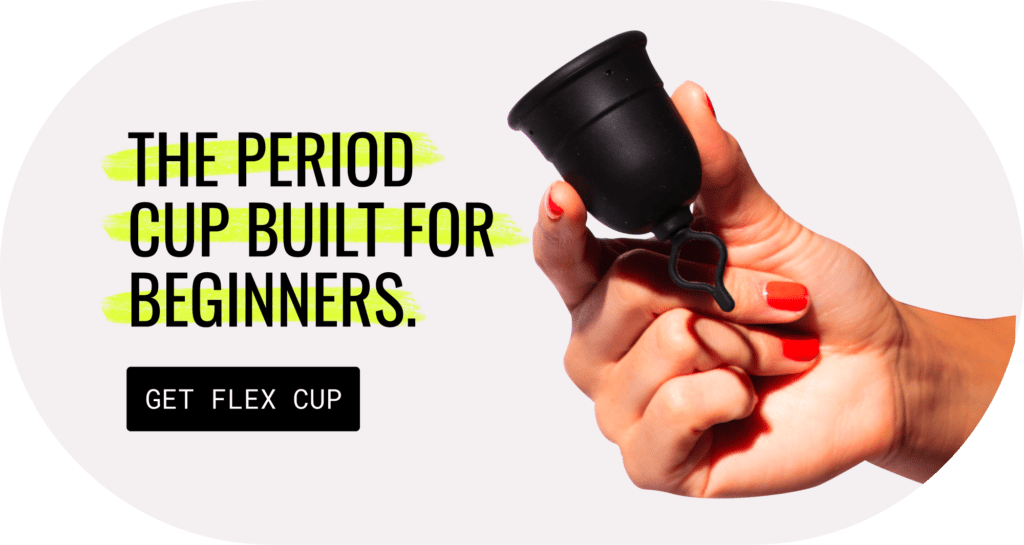
Menstrual cups and suction: Can they harm the cervix or increase risk of prolapse?
According to Dr. Jane, “It is not my professional opinion that cups can increase the risk of vaginal or uterine prolapse, though I have no well-designed and tested data or studies to prove this.”
“Having said that, there are other significant risk factors for prolapse and they include: chronic cough, constipation, having one or more pregnancies, vaginal births, giving birth to large infants, obesity, advanced age, and family history of connective tissue disease or weakness.”
In other words, there are many risk factors that outweigh menstrual cup use when it comes to uterine prolapse. Reassuringly, a peer-reviewed article published by The Lancet found that, “In studies that examined the vagina and cervix during follow-up, no mechanical harm was evident from use of a menstrual cup.”4
Flex Cup was designed to minimize suction-related risks tied to cup removal. Since Flex Cup’s pull tab simplifies the process of breaking the suction seal, removing your cup is easier and more comfortable than it is with most traditional period cups, which require the wearer to use a finger and thumb to squeeze the base of the cup and manually release the suction.
Dr. Jane explains, “Flex Cup’s pull-tab releases the suction at the top of the cup prior to removal, which diminishes the amount of negative pressure placed on the cervix.”
Are menstrual cups safe? Key takeaways
The bottom line? Menstrual cups are incredibly safe. Flex Cup, in particular, is FDA-registered, made with 100% medical-grade silicone, hypoallergenic, and is approved for up to 12 hours of wear.
Dr. Jane adds that “It’s important for people with uteruses to know and understand that they have choices, and that, if there is something they don’t like about their period product, they can try out alternative period products until they find one that best fits their lifestyle.”
“Some people don’t want to change a tampon every four hours, and having a cup or disc that holds more menstrual blood is key to improving their quality of life during their period.”
She concludes, “If Flex Cup works for your lifestyle and values, it’s the best product for you.”
This article is informational only and is not offered as medical advice, nor does it substitute for a consultation with your physician. If you have any gynecological/medical concerns or conditions, please consult your physician.
© 2025 The Flex Company. All Rights Reserved.
- Van Eijk, A. M., Zulaika, G., Lenchner, M., Mason, L., Sivakami, M., Nyothach, E., Unger, H., Laserson, K., & Phillips-Howard, P. A. (2019). Menstrual cup use, leakage, acceptability, safety, and availability: A systematic review and meta-analysis. The Lancet Public Health, 4(8), e376-e393. https://doi.org/10.1016/s2468-2667(19)30111-2[↩]
- Wiebe, E. R., & Trouton, K. J. (2012). Does using tampons or menstrual cups increase early IUD expulsion rates? Contraception, 86(2), 119-121. https://doi.org/10.1016/j.contraception.2011.12.002[↩]
- El Soufi, H., El Soufi, Y., Al-Nuaimi, S., & Bagheri, F. (2021). Toxic shock syndrome associated with menstrual cup use. IDCases, 25, e01171. https://doi.org/10.1016/j.idcr.2021.e01171[↩]
- The Lancet public health. (2019, July 16). First scientific review of menstrual cups suggests they are safe and may be as effective as other sanitary products. EurekAlert! https://www.eurekalert.org/news-releases/795569[↩]
